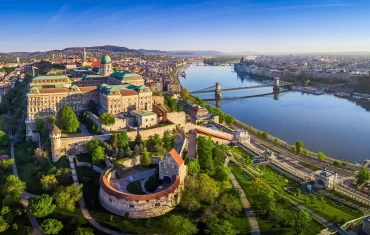Croatia, on the Adriatic coast, boasts stunning landscapes, historic towns, and a rich culture. Its coast offers pristine beaches, while national parks like Plitvice Lakes showcase natural beauty. The country’s historical sites, diverse cuisine, and vibrant festivals make it a compelling European destination.
Zagreb’s Hidden Charm
Don’t underestimate Zagreb! This underrated European capital boasts cobblestone streets, Gothic churches, and quirky museums. Spend at least three days exploring its Old Town and green spaces.

Explore Slavonia
Venture off the beaten path to the rural region of Slavonia, known for its food and wine. Discover the historical center of Osijek and savor local specialties like fish paprikash in Zmajevac.

Island-Hopping in Croatia
With over a thousand islands, Croatia is a paradise for island-hoppers. Start from Split and visit popular islands like Brac and Hvar or explore lesser-known gems like Silba and Vis, all accessible by affordable ferries.

Oyster Delight in Mali Ston
Just an hour from Dubrovnik lies Mali Ston, famous for its delectable oysters. Explore oyster farms, learn about the industry, and enjoy tastings. Don’t miss Bota Šare’s tours.

Hvar’s Vibrant Scene
Hvar Island’s main town offers nightlife galore, but tranquility and natural beauty are also on the menu. Discover Stari Grad, picturesque beaches, hiking trails, and vineyards.

Wine Tasting in Peljesac
The overlooked Peljesac Peninsula is a wine lover’s paradise. Savor local wines, including organic options, at places like Križ winery.

Dubrovnik’s Majesty
Explore Dubrovnik’s historic Old Town, famous for its Game of Thrones connections. Stroll limestone streets, visit iconic landmarks, and take in Adriatic views.

Karlovac’s Beer Culture
Spend a night in Karlovac, home to Karlovacko beer. Explore the town’s small fort, museums, and scenic paths, or venture to nearby waterfalls with a car.

Underrated Sibenik
Don’t miss the seaside town of Sibenik with its Renaissance-era Cathedral of St. James. Use it as a base to explore Krka National Park.

Diocletian’s Palace in Split
Explore the wonders of Diocletian’s Palace in Split, a UNESCO Heritage Site built by a Roman emperor. Today, it’s a bustling hub with shops and cafes nestled within its historic walls.

5 FAQs About Croatia
1.Is Croatia safe for tourists?
- Croatia is generally considered a safe destination for tourists. Violent crime is rare, and the country has a stable political environment. However, like any destination, it’s essential to take common-sense precautions such as safeguarding your belongings and being aware of your surroundings, especially in crowded tourist areas.
2.What is the best time to visit Croatia?
- The best time to visit Croatia depends on your preferences. The summer months of June to August are popular for coastal destinations, offering warm weather and vibrant nightlife. Spring (April to May) and early autumn (September to October) are ideal for milder weather, fewer crowds, and lower prices. Winter can be an excellent choice for exploring cultural and historical sites without the tourist rush.
3.What are the must-visit destinations in Croatia?
- Croatia offers a variety of must-visit destinations. Dubrovnik’s historic Old Town, Plitvice Lakes National Park with its stunning waterfalls, the city of Split with Diocletian’s Palace, and the coastal towns of Hvar and Rovinj are just a few of the highlights. The choice depends on your interests, whether it’s history, nature, or beach relaxation.
4.Do I need a visa to visit Croatia?
- Croatia is part of the European Union but is not yet part of the Schengen Area. As visa requirements can change, it’s advisable to check with the Croatian embassy or consulate in your home country to determine if you need a visa and what the specific requirements are based on your nationality and the purpose of your visit.
5.What is the currency used in Croatia?
- Croatia uses the Croatian Kuna (HRK) as its official currency. While many tourist areas and businesses accept credit cards and euros, it’s advisable to have some kunas on hand, especially when traveling to more remote or smaller towns. Currency exchange is widely available at banks, exchange offices, and ATMs throughout the country.








